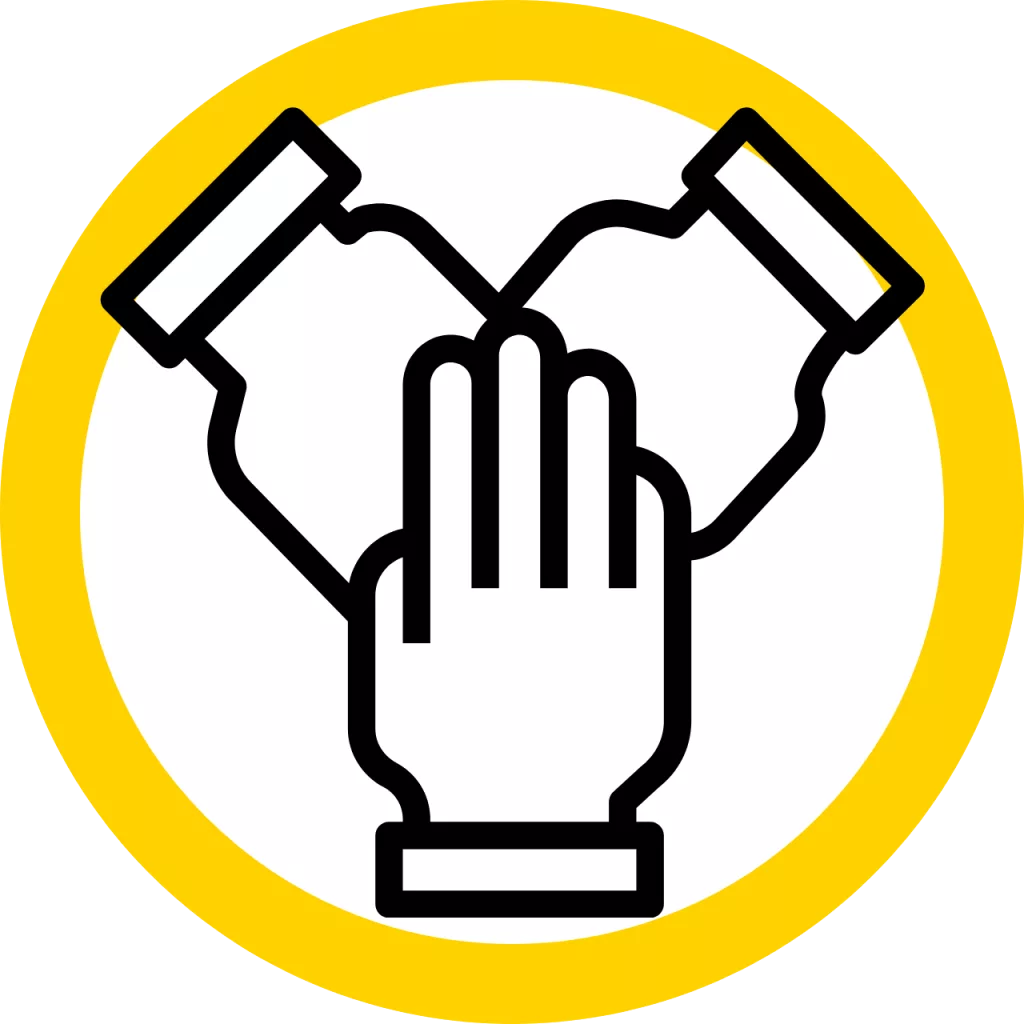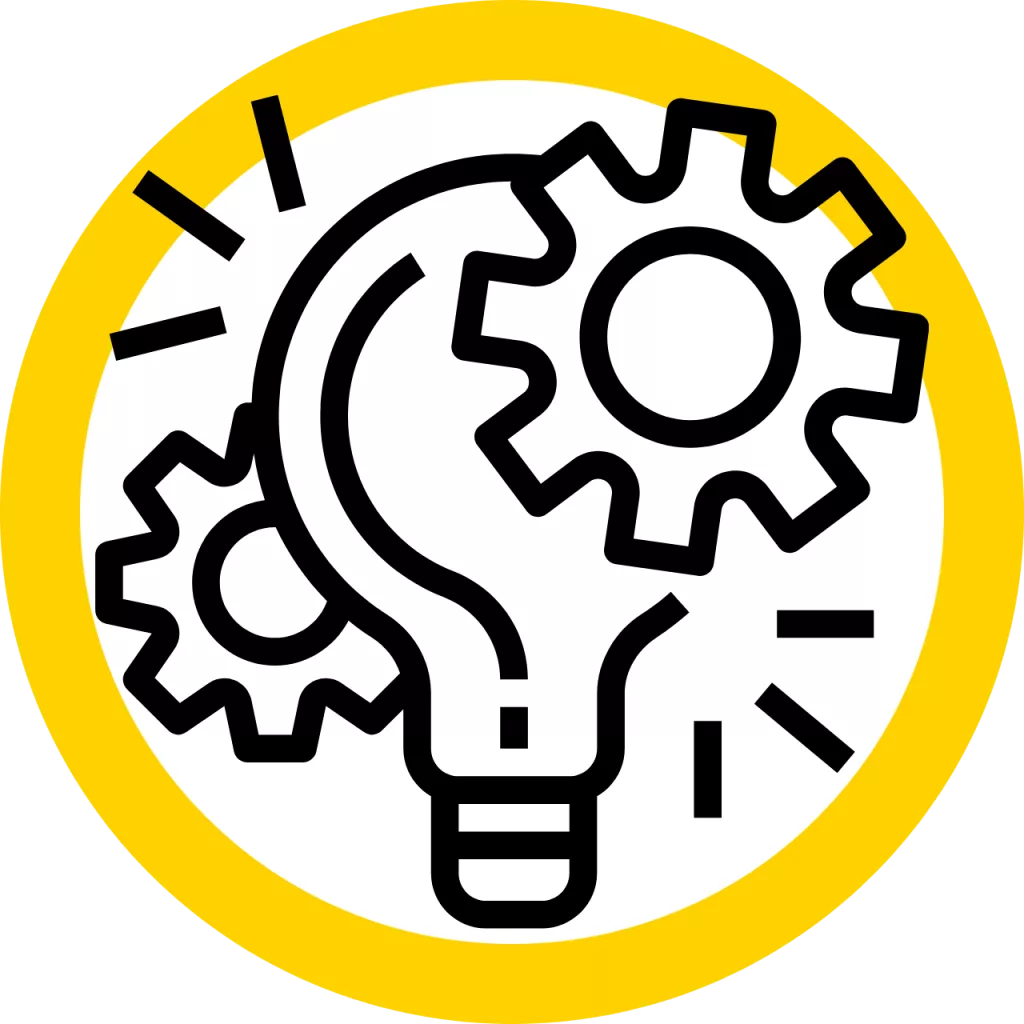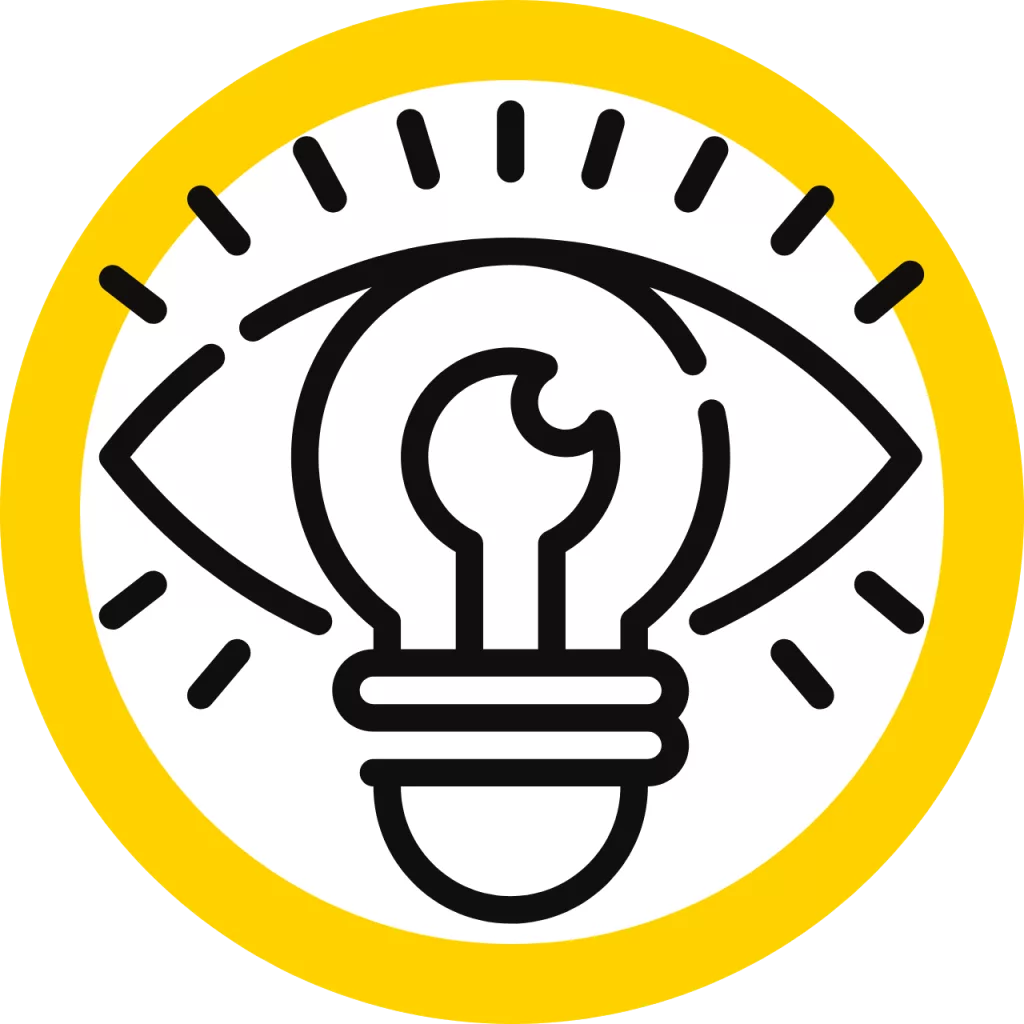When the pandemic hit, the world of work underwent profound changes that affected the reality of leaders in direct and complex ways.
Based on over 1,000 competency profiles of managers at all levels, we can now draw a clear portrait of how the most sought-after competencies have shifted over time. To start, we observed a strong increase in the demand for competencies related to vision, which help leaders better understand the challenges and think about them strategically. Collaboration has also become more crucial than ever for managers, who have had to adapt to new ways of working in teams while ensuring that relationships are harmonious and efficient. Finally, the pandemic forced organizations to quickly adapt to change, which requires greater agility, creativity, and innovation.
When the pandemic hit, the world of work underwent profound changes that affected the reality of leaders in direct and complex ways.
Based on over 1,000 competency profiles of managers at all levels, we can now draw a clear portrait of how the most sought-after competencies have shifted over time. To start, we observed a strong increase in the demand for competencies related to vision, which help leaders better understand the challenges and think about them strategically. Collaboration has also become more crucial than ever for managers, who have had to adapt to new ways of working in teams while ensuring that relationships are harmonious and efficient. Finally, the pandemic forced organizations to quickly adapt to change, which requires greater agility, creativity, and innovation.
Our assessment experts across Canada help clients in all sectors determine which competency profiles to look for to ensure the best fit with their organizations. We are privileged witnesses to their evolving needs. Our role is to assess whether a candidate’s competency profile matches up with what the organization is looking for and help our clients manage the risks of potential gaps. Needs change, which is why we update our competency model approximately every 10 years, in line with the changes in the glossary we use to identify these competencies. New competencies—such as working in hybrid mode—are emerging, whereas others—such as the importance of mastering communication technologies—are changing.
Analyzing competencies helps us determine and assess the various aspects of a given profession. A competency profile, established using a model, is a prism through which the organization can accurately define the vital components of a profession, including the key and cross-functional competencies needed to fulfill the role and the level of skill needed to excel at it. Since businesses operate in a constantly changing environment (technological developments, new laws, fierce competition), our professions and ways of doing things also change, which in turn dictates which competencies we need to leverage. On the flipside, when the competencies organizations prioritize change, it’s fair to assume that the profession—and by extension, the sector itself—is also changing. The pandemic and the health measures that came with it forced businesses and their respective sectors to adapt. From these adaptations, we saw changes in how work is organized, new ways of doing things, and new requirements—all of which led to new competencies.
We studied the effects the pandemic may have had on professions: Did it influence which competencies organizations need most in their leaders, leading the professions themselves to evolve? To answer this question, we analyzed data from the competency profiles of 1,395 leaders over three periods, which uncovered several key insights.
Our assessment experts across Canada help clients in all sectors determine which competency profiles to look for to ensure the best fit with their organizations. We are privileged witnesses to their evolving needs. Our role is to assess whether a candidate’s competency profile matches up with what the organization is looking for and help our clients manage the risks of potential gaps. Needs change, which is why we update our competency model approximately every 10 years, in line with the changes in the glossary we use to identify these competencies. New competencies—such as working in hybrid mode—are emerging, whereas others—such as the importance of mastering communication technologies—are changing.
Analyzing competencies helps us determine and assess the various aspects of a given profession. A competency profile, established using a model, is a prism through which the organization can accurately define the vital components of a profession, including the key and cross-functional competencies needed to fulfill the role and the level of skill needed to excel at it. Since businesses operate in a constantly changing environment (technological developments, new laws, fierce competition), our professions and ways of doing things also change, which in turn dictates which competencies we need to leverage. On the flipside, when the competencies organizations prioritize change, it’s fair to assume that the profession—and by extension, the sector itself—is also changing. The pandemic and the health measures that came with it forced businesses and their respective sectors to adapt. From these adaptations, we saw changes in how work is organized, new ways of doing things, and new requirements—all of which led to new competencies.
We studied the effects the pandemic may have had on professions: Did it influence which competencies organizations need most in their leaders, leading the professions themselves to evolve? To answer this question, we analyzed data from the competency profiles of 1,395 leaders over three periods, which uncovered several key insights.
Did the pandemic have an impact on which competencies we need most to do our jobs?
Top competencies, broken down into three periods
We chose three periods to reflect how the pandemic affected which competencies were most sought-after in Canada: the year before the pandemic (2019), the height of the pandemic (mid-2020 and 2021), and the final six months of 2022.
2019
|
Motivating others
Courage to act
Focus on results
Mid-2020 and 2021
|
Motivating others
Courage to act
Agility
Last six months 2022
|
Motivating others
Courage to act
Focus on results
Three competencies (motivating others, courage to act, and focus on results) remained relatively stable between 2019 and 2022 but shifted temporarily at the height of the pandemic (2020–2021), when agility moved up to third place.
How competencies have evolved since 2019
The pandemic put a lot of pressure on organizations and their managers, which had a major impact on the ways of managing work and, in turn, the competencies required of leaders. Although the top three competencies didn’t change much between 2019 and 2022, we observed major changes in some of the competencies in the Humance Competency Model. Among the most striking was a significant jump in competencies related to collaboration, innovation, and vision.
Did the pandemic have an impact on which competencies we need most to do our jobs?
Top competencies, broken down into three periods
We chose three periods to reflect how the pandemic affected which competencies were most sought-after in Canada: the year before the pandemic (2019), the height of the pandemic (mid-2020 and 2021), and the final six months of 2022.
2019
Motivating others
Courage to act
Focus on results
Mid-2020 and 2021
Motivating others
Courage to act
Agility
Last six months 2022
Motivating others
Courage to act
Focus on results
Three competencies (motivating others, courage to act, and focus on results) remained relatively stable between 2019 and 2022 but shifted temporarily at the height of the pandemic (2020–2021), when agility moved up to third place.
How competencies have evolved since 2019
The pandemic put a lot of pressure on organizations and their managers, which had a major impact on the ways of managing work and, in turn, the competencies required of leaders. Although the top three competencies didn’t change much between 2019 and 2022, we observed major changes in some of the competencies in the Humance Competency Model. Among the most striking was a significant jump in competencies related to collaboration, innovation, and vision.

The shift to new ways of collaborating
The pandemic disrupted how we organize work, particularly by making telework the norm. For many organizations, managing teams remotely forced them to review how they worked together. Collaboration, one of the main relationship competencies, jumped from eighth to fourth place, just behind focus on results.
While collaboration and teamwork are essential to ensure things run smoothly when working in person, working remotely raises new challenges: How can you fully contribute to team objectives? How can you be available when you don’t share the same workspace? How can you foster discussion and ensure cohesion within the group? These questions represent challenges for organizations and strong collaboration may be the key to addressing them.

The shift to new ways of collaborating
The pandemic disrupted how we organize work, particularly by making telework the norm. For many organizations, managing teams remotely forced them to review how they worked together. Collaboration, one of the main relationship competencies, jumped from eighth to fourth place, just behind focus on results.
While collaboration and teamwork are essential to ensure things run smoothly when working in person, working remotely raises new challenges: How can you fully contribute to team objectives? How can you be available when you don’t share the same workspace? How can you foster discussion and ensure cohesion within the group? These questions represent challenges for organizations and strong collaboration may be the key to addressing them.

Adapting to thrive
In such unprecedented and uncertain times, organizations, cognizant of the fact that they need to adapt, appear to consider this competency as a priority in their leaders. The ability to adapt, which combines agility (ranked third in 2021), innovation and creativity (up six spots between 2019 and 2021), may represent a strategic driver in light of the complexity and unpredictability of the pandemic. According to Marie-Josée Lareau, Creativity and Innovation Leader at Humance, leaders demonstrate creativity and innovation through their ability to think outside the box and look at their environment with fresh eyes. A variety of tools, such as leadership training or workshops to help the organization become more inspiring, can help leaders strengthen this competency.

Adapting to thrive
In such unprecedented and uncertain times, organizations, cognizant of the fact that they need to adapt, appear to consider this competency as a priority in their leaders. The ability to adapt, which combines agility (ranked third in 2021), innovation and creativity (up six spots between 2019 and 2021), may represent a strategic driver in light of the complexity and unpredictability of the pandemic. According to Marie-Josée Lareau, Creativity and Innovation Leader at Humance, leaders demonstrate creativity and innovation through their ability to think outside the box and look at their environment with fresh eyes. A variety of tools, such as leadership training or workshops to help the organization become more inspiring, can help leaders strengthen this competency.

The importance of vision
Faced with the implementation of new practices and the need to adjust, the pandemic disrupted the strategic planning of organizations of all sizes. According to Étienne Beaulieu, who heads the Organizational Transformation & Strategy division at Humance, organizations stepped up their strategic planning over time, and the pandemic, with all its uncertainty, was a contributing factor to this change. The need to adjust became essential. While it’s impossible to foresee the unforeseeable, it is possible to make every effort to fully understand the problems and think about them strategically. That’s what more and more organizations are doing, as we’ve noticed from the striking increase in those seeking competencies associated with vision in the Humance Competency Model.

The importance of vision
Faced with the implementation of new practices and the need to adjust, the pandemic disrupted the strategic planning of organizations of all sizes. According to Étienne Beaulieu, who heads the Organizational Transformation & Strategy division at Humance, organizations stepped up their strategic planning over time, and the pandemic, with all its uncertainty, was a contributing factor to this change. The need to adjust became essential. While it’s impossible to foresee the unforeseeable, it is possible to make every effort to fully understand the problems and think about them strategically. That’s what more and more organizations are doing, as we’ve noticed from the striking increase in those seeking competencies associated with vision in the Humance Competency Model.
Of the ten competencies that increased the most since 2019, eight are classified under vision. They include competencies to understand the environment and measure how operations are evolving (e.g., focus on metrics, ability to synthesize, reading the environment). However, there has also been an increase in competencies related to decision-making and the implementation of concrete and collaborative actions to restore the situation and consolidate business (e.g., implementing strategy, business development, developing strategy).
An interesting trend emerged over the three periods we studied. It is possible to interpret these figures as vestiges of the pandemic, particularly the increased need for collaboration and vision. They can also serve as guideposts for leaders navigating the new reality of work.
Given the strategic nature of the competency-based approach, whose main challenge is to develop a proactive vision, these changes are not trivial: The profiles of today’s leaders must equip them for the challenges up ahead. In addition, the competencies that we seek in leaders reflect both the changes in working methods on a macro scale (e.g., management practices adapted to remote work, which is here to stay) and the changes specific to positions and sectors (e.g., business sectors where meeting clients face to face is less and less common).
Thus, it is clear that these competencies are in flux and shaped by strategy: defining and assessing competencies using a comprehensive model to identify the key components of a position, but also analyzing how competencies evolve to anticipate shifts in the profession and sector. Consequently, it may be interesting to look into the particularities of the sectors hit hardest by the pandemic.
Do you want to go further? Contact us.





